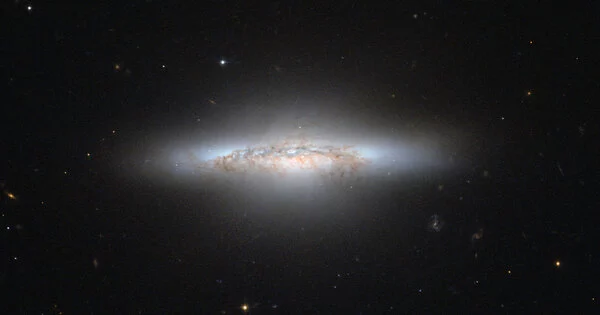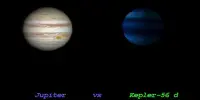In galaxy morphological classification schemes, a lenticular galaxy (denoted S0) is a type of galaxy intermediate between an elliptical (denoted E) and a spiral galaxy. It includes a large-scale disc but no large-scale spiral arms. In terms of structure, it is a type of galaxy that falls between elliptical and spiral galaxies. These galaxies have a central bulge surrounded by a disk-like structure, which is similar to spiral galaxies but lacks prominent spiral arms. They are called “lenticular” because they resemble lenses.
Lenticular galaxies are disc galaxies that have consumed or lost the majority of their interstellar matter, resulting in very little ongoing star formation. They may, however, have a lot of dust in their discs. As a result, they are mostly made up of ageing stars (much like elliptical galaxies).
Despite their morphological differences, lenticular and elliptical galaxies share spectral features and scaling relations. Both can be classified as early-type galaxies that are passively evolving, at least in the nearby Universe. The ES galaxies with intermediate-scale discs connect the E galaxies to the S0 galaxies.

In terms of structure, it is a type of galaxy that falls between elliptical and spiral galaxies. Lenticular galaxies have a central bulge surrounded by a disk-like structure, which is similar to spiral galaxies but lacks prominent spiral arms. They are called “lenticular” because they resemble lenses.
Here are some key characteristics of lenticular galaxies:
- Shape: Lenticular galaxies have a disk-like structure, similar to that of a lens or a flattened sphere. They lack the prominent spiral arms characteristic of spiral galaxies.
- Bulge: Lenticular galaxies, like elliptical galaxies, have a central bulge that contains older stars. This bulge is typically more spherical in shape than elliptical galaxy bulges, which are more elongated.
- Disk: Lenticular galaxies, like spiral galaxies, have a disc component. The disc is made up of both old and young stars, as well as interstellar gas and dust. However, in lenticular galaxies, the disc is less prominent and lacks a well-defined spiral structure.
- Classification: The Hubble sequence, which classifies galaxies based on their morphology, is used to classify lenticular galaxies. They are denoted as S0, with the letter “S” representing the disc structure and the letter “0” indicating the lack of spiral arms.
- Stellar populations: Lenticular galaxies have a diverse stellar population. Older stars can be found in the central bulge, while younger stars can be found in the disc.
- Interstellar medium: When compared to spiral galaxies, lenticular galaxies have less interstellar gas and dust. One of the reasons they lack the prominent spiral arms seen in spiral galaxies is because they have less gas and dust.
Lenticular galaxies are frequently found in galaxy clusters, implying that interactions and gravitational interactions with neighbouring galaxies may play a role in their formation and evolution. They are thought to be an intermediate stage in the evolution of spiral galaxies into elliptical galaxies, as they exhibit characteristics of both types.
















